Making a list and checking it twice: A look at BNSF’s Winter Action Plans
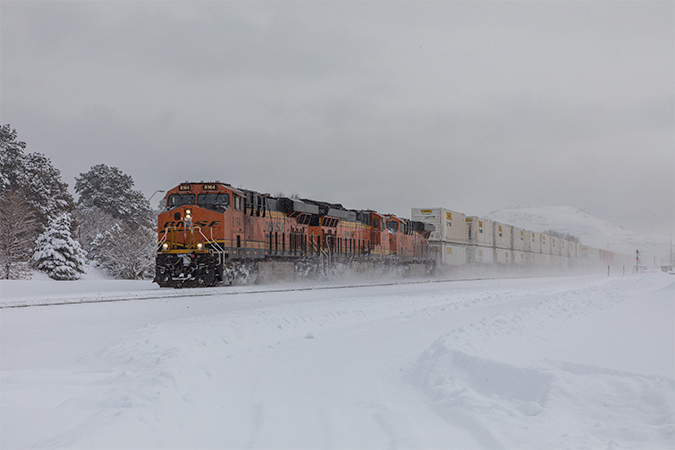
That hectic time between Thanksgiving and Christmas is one of the busiest for BNSF. We work hard to make sure that we do our part to get packages delivered in time for the holidays. Unfortunately, this is also when Jack Frost is at his worst, manipulating ice and snow in the forms of winter storms, blizzards and polar vortexes that can wreak havoc on the nation’s infrastructure.
Long before the first freeze, BNSF’s 10 operating divisions create winter action plans to ensure that resources and procedures are in place to minimize winter’s impact. During this planning process, teams examine current winter procedures, priorities and responsibilities to see if adjustments are needed, based on past experiences in each of the division’s unique climates.
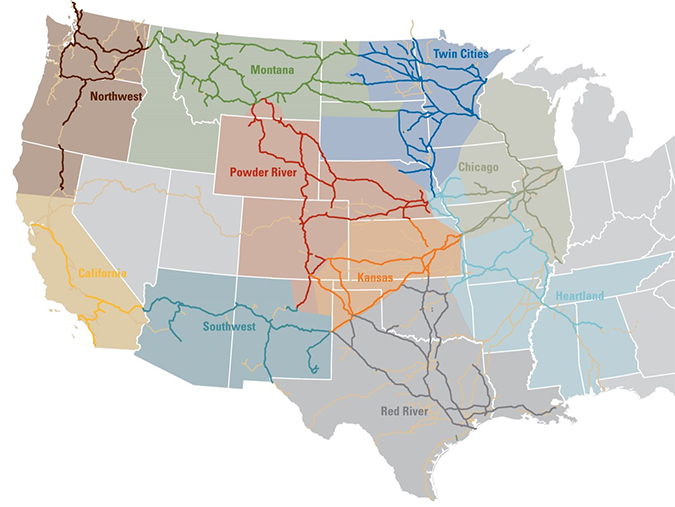
While weather is always unpredictable, BNSF is fully equipped and prepared for the 2019-2020 season so that our employees stay safe amid the harshest of weather conditions and our customers’ freight gets to its destination. BNSF’s coordination with AccuWeather Enterprise Solutions is vital in this endeavor to make sure we provide the latest weather information to our Network Operations Center and employees in the field.
“Our goal at AccuWeather Enterprise Solutions is to deliver the very best weather insights to assist BNSF in making critical decisions that ultimately protect people and operations and ensure trains remain in motion by avoiding hazardous weather conditions,” said Jonathan Porter, Vice President and General Manager of AccuWeather Enterprise Solutions.
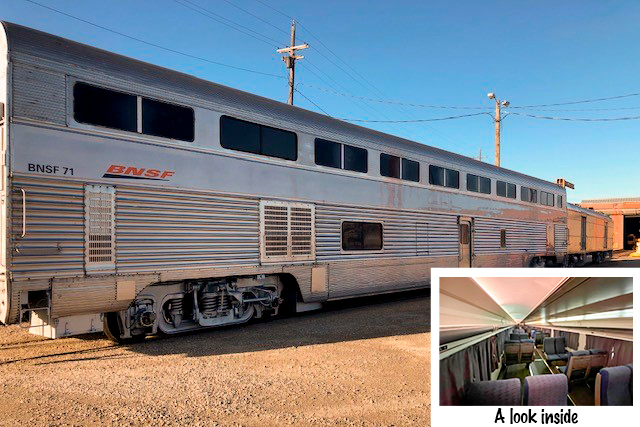
Once weather strikes, we continually restock and position resources and personnel to ensure rapid response to winter challenges. For example, starting this year, we have two restored passenger rail cars capable of holding 40 people that will be used to move train crews when highways are impassable. These “snow coaches” are stationed in the North Region over mountain passes, ensuring our crews can move safely and reliably when needed.
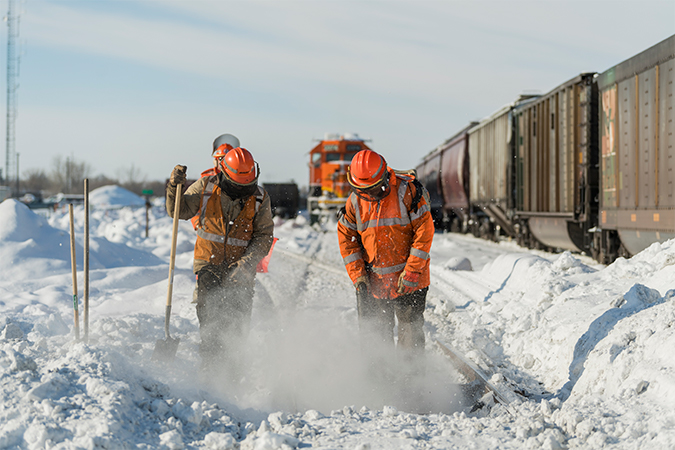
Additionally, our Mechanical rapid responders are cross-trained to resolve car and locomotive issues when cold temperatures affect components. Engineering rapid responders are also available to ensure the integrity of our track, signals and structures. Both teams operate on a 24-7-365 basis.
“Going into this winter season, the BNSF network remains in the best condition it has ever been,” said Rance Randle, vice president, North Region operations. “We are prepared for the challenges of winter and will work diligently to move freight safely, reliably and efficiently.”
Here are other ways we prepare for winter’s challenges:
Salt domes that hold up to 650 tons of salt and snow removal equipment, including two industrial-size snow blowers for our Chicago hub, are in place at facilities to keep them free of snow and ice.
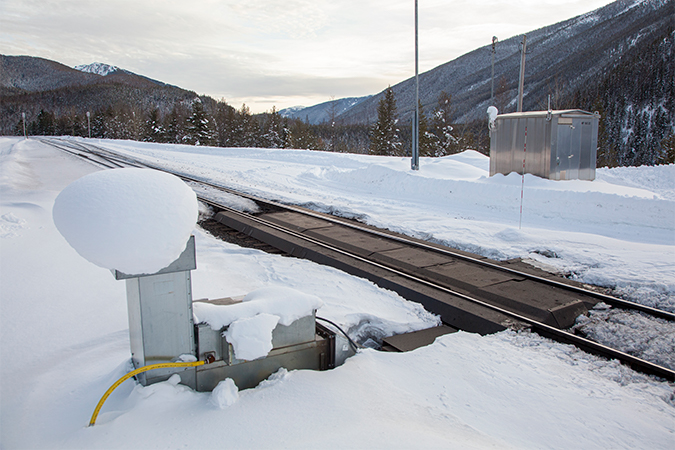
We have more than 4,800 switch heaters installed on our network to ensure remote-controlled rail switches do not freeze.
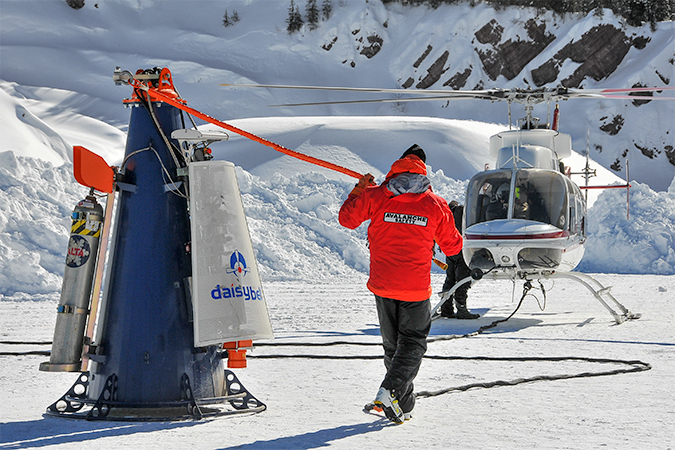
BNSF maintains a strong partnership with the National Park Service and we coordinate with local, state and federal agencies to deploy Daisy Bell technology that helps our avalanche specialists monitor and mitigate avalanche conditions in Montana. When called upon, our specialists use the Daisy Bell technology to ignite a mixture of oxygen and hydrogen that generates a concussion wave, creating a controlled slide to break up hazardous conditions.
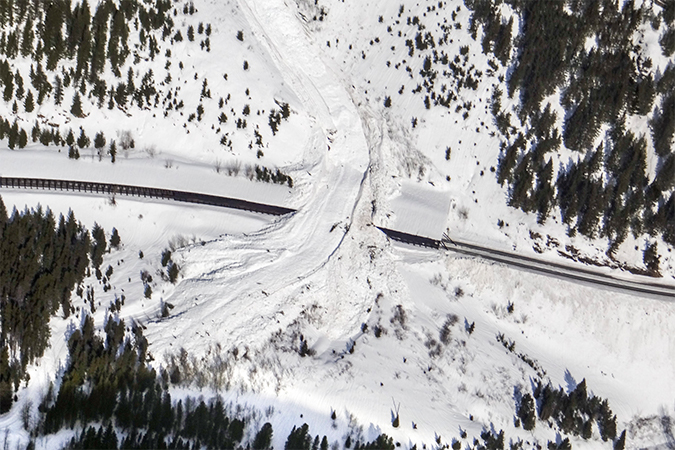
BNSF currently has 10 active snow sheds with a total combined length of more than 6,900 feet on the Hi-Line Subdivision in John F. Stevens Canyon near the southern border of Glacier National Park in Montana. Additionally, BNSF also maintains six single track snow sheds on the Stampede Subdivision through the Cascade Mountains in Washington.
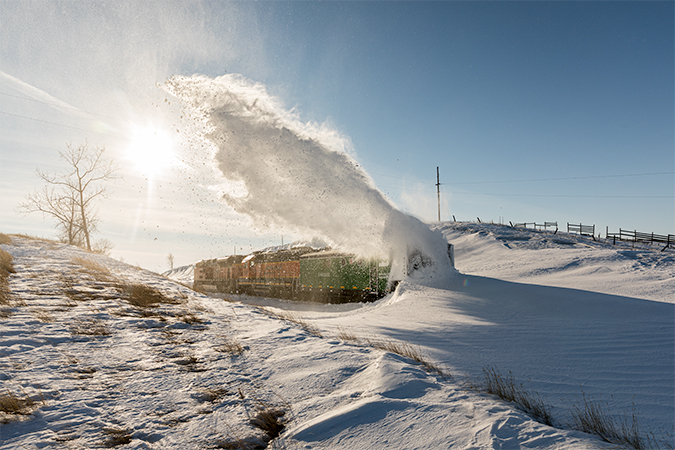
BNSF’s rotary snowplows help carve a patch through snow-packed track whenever and wherever called upon.
In addition to the resources mentioned above, our employees are briefed on hypothermia and frostbite prevention, as well as general safety precautions regarding slips, trips and falls and cold weather personal protective equipment. They review winter weather operational procedures on when to adjust crew transportation, as well as when to adjust train size, speed and other operating restrictions.
Did You Know?
The most important proactive safety tips we instill in our employees are to stay focused and to be mindful of the task at hand and the surrounding elements. The following four tenets are not only for railroad winter safety, but are pertinent for everyone in everyday safety practices:
- Identify exposures and risks and discuss or think about the best ways to minimize risks.
- Acknowledge stress and distractions that may take your mind of the task at hand, and allow yourself to take time to refocus.
- Know when to pause your work to rebrief and safely adjust your approach when the routine becomes non-routine or conditions change.
- Approach others about safety. Be willing to reinforce positive safety behaviors by acknowledging people who are working safely, and expressing concerns when they put themselves at risk.
For more information and videos, visit BNSF's winter weather operations page.